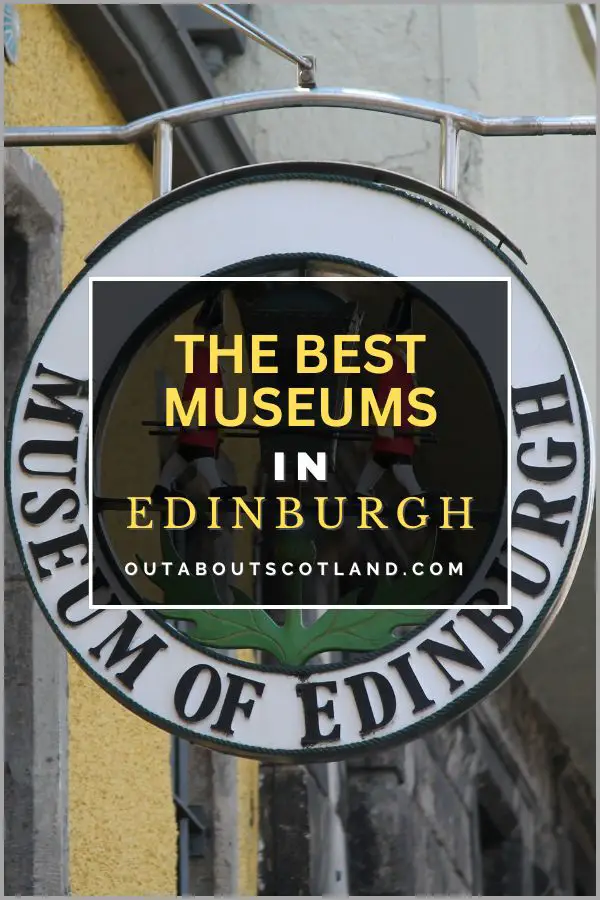Lauriston Castle and Gardens is a historic mansion house in Edinburgh that’s open for guided tours, along with dog-friendly landscaped gardens that are open year-round.
The castle is located 6 miles northwest of the city centre, where it overlooks Silverknowes Beach and the Firth of Forth. Museums & Galleries Edinburgh is in charge of running the attraction and upholds the Edwardian aesthetic of the castle, which hasn’t changed since the final occupants left 100 years ago.
In addition to exploring the house on a guided tour, visitors can walk around the formal and Japanese gardens before enjoying home-baked goodies from the on-site café.
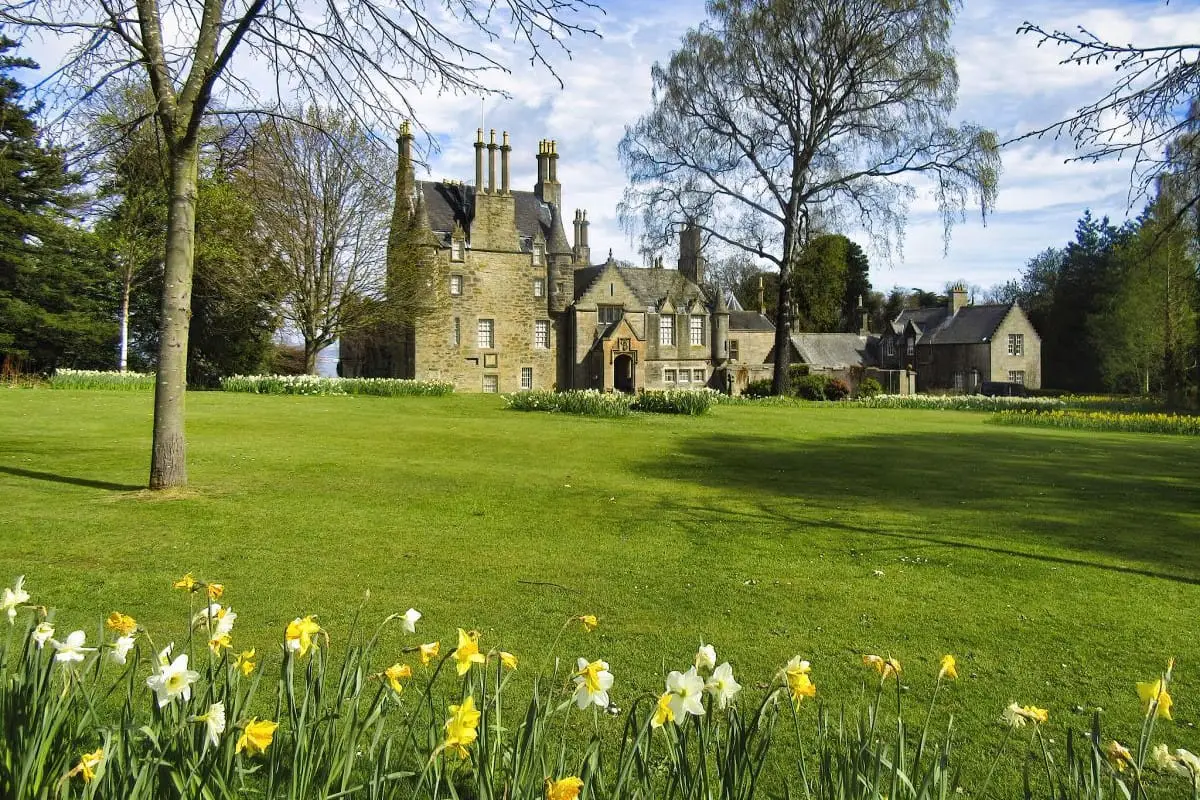
| Address: | 2 Cramond Road South, Edinburgh, EH4 6AD |
| Opening Hours: | The grounds are open to the public between 8 am-7.30 pm each day. Mimi’s Bakehouse is also open to the public from Monday-Sunday 9 am - 4 pm. |
| Admission Price: | Free |
| Parking: | Free onsite parking |
| Contact: | +44 (0) 131 336 2060 museumsandgalleries@edinburgh.gov.uk |
| Facilities: | Outdoor accessible toilets, dining table, castle gardens, cafe |
Overview
Lauriston Castle is an Edinburgh attraction that few tourists ever hear about, let alone visit. This 16th-century tower house and its substantial 19th-century extensions are one of the finest examples of its type in Scotland and feature exceptional gardens. The gardens are open throughout the year, but the house is closed for winter, after which it opens for paid guided tours.
The gardens, meanwhile, are free to enter between 8 am and 4 pm and comprise large lawn areas coupled with a stunning Japanese garden that was created to commemorate the twinning of Edinburgh with Kyoto in Japan.
During a visit you’re free to walk around the estate at your leisure, though the gardens themselves shouldn’t take much more than an hour to see in their entirety, with a guided tour taking another hour.
The wealthy Reid family amassed extensive collections of fine art and opulent furnishings, filling Lauriston Castle to the gills. These include Chinese and Dutch ceramics, Scottish and English furniture, and a number of personal belongings that are in the same condition as when the last owner departed in the 1920s.
Lauriston Castle History
There’s a lot of history to discover at Lauriston Castle, and during a tour you’ll learn how there was once a medieval tower house on the site before the current tower was built by the Earl of Hertford in 1544. This building was a simple four-story fortification with a circular stairway and rooftop turrets, but it went through significant structural changes during the 19th century and now bears no resemblance to the initial design.
Although Lauriston Castle passed through the hands of several owners over the span of 300 years it was the Edinburgh mineralogist Thomas Allan who remodelled it in 1827 into the building we see today.
The owners of the Edinburgh cabinetmaking company Morison & Co. continued to modernize the house over the ensuing 100 years until they finally turned it over to state care in 1926. Today, Edinburgh Council, alongside Museums & Galleries Edinburgh, caress for and maintains the buildings and gardens so that the estate remains much as it was in the early 1900s, and it remains one of the most beautiful examples of a manor house in Scotland.
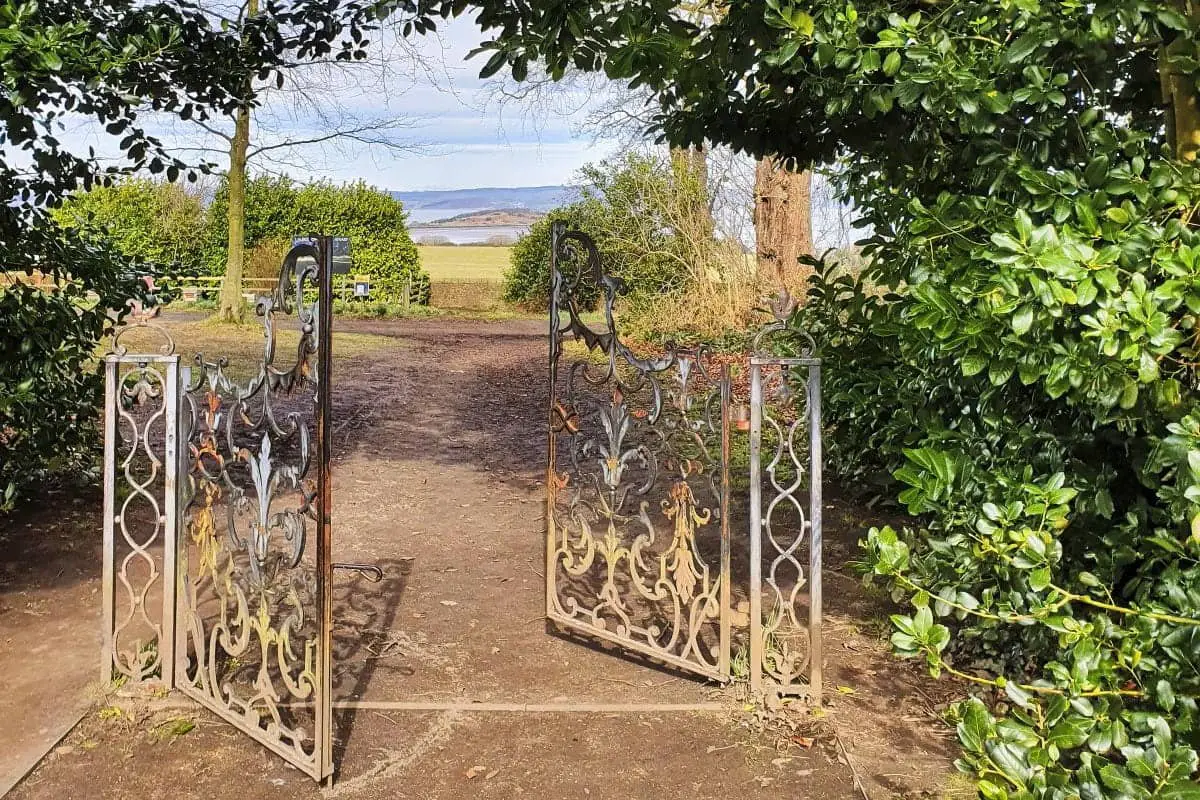
The Highlights
1: Lauriston Castle grounds are open all year, offer superb views across the Firth of Forth, and are dog friendly. The grounds are surprisingly big for an Edinburgh house and comprise an award-winning Japanese garden, a woodland, and a large lawn, which are all great spaces to escape the hubbub of busy city life. And as a bonus, the Lauriston Castle gardens are completely free to enter.
2: Museums & Galleries Edinburgh, who oversee the castle, has done a fantastic job of maintaining the interior exactly as it would have appeared when the last residents left in the 1920s. Lauriston Castle is a fine example of Edwardian life, and the furniture, decor, and art collections are some of the finest in the city. Paying the modest fee to join a guided tour is highly recommended.
3: A special mention has to be made for Mimi’s Bakehouse which is located in the castle and serves a delicious take-out lunch menu, hot drinks, and award-winning cakes.
Visiting Tips
1: A visit to Lauriston Castle won’t take long (plan around an hour for the gardens and another for the tour) so it’s best combined with a visit to Cramond Island which is just 1.5 miles north.
2: The castle is usually closed for winter but the grounds are open year-round. To ensure you don’t end up disappointed if you’re looking for a tour, visit the Museums & Galleries Edinburgh website before leaving home.
3: There’s a car park at Lauriston Castle that fills early at the weekend but you should find a space if you arrive shortly after the gates open at 8 am. Failing that, there’s a car park at Silverknowes Beach (a 30-minute walk). Lauriston Castle’s address is 2 Cramond Road South, Edinburgh, EH4 6AD.
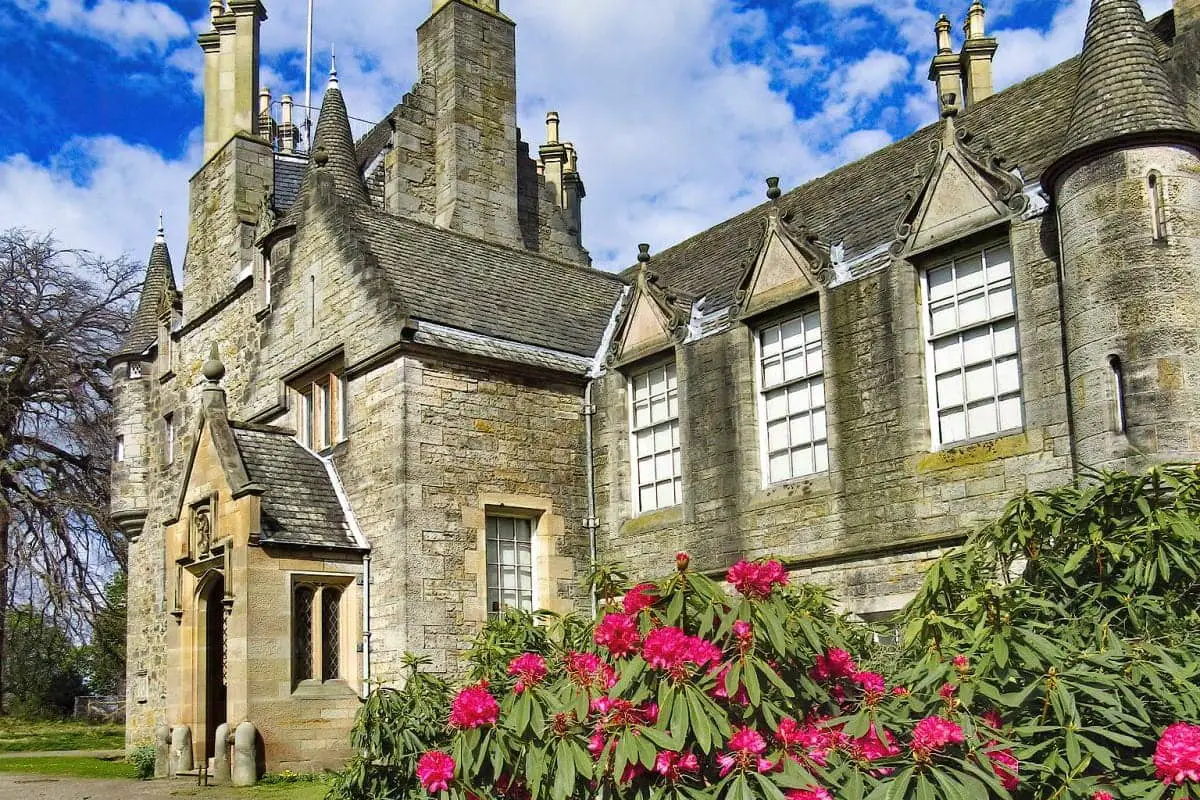
Tourist Information
Lauriston Castle is a popular attraction (at least with Edinburgh locals) so it gets quite busy at the weekend, mainly because the castle has a car park and offers a nice place for dog walkers to take their pooches. From the on-site car park, it’s a short walk onto the lawns of the estate, which present superb views of the Firth of Forth, even in the depths of winter.
The extensive grounds are open for visitors to walk around and enjoy daily, but the inside of the house is only accessible during guided tours that are held in summer. However, the majority of visitors come for the gardens, the highlight of which has to be the Japanese garden which covers over one hectare and is dedicated to the close relationship between the cities of Edinburgh and Kyoto.
These gardens contain a wide array of flowers and plants – many non-native to Scotland – and the entire site is perfect for enjoying a relaxing stroll, especially in summer when the flowers are in full bloom. There’s also a rose garden, a pond, and a woodland to explore, after which visitors can relax with delicious baked goodies and hot drinks from Mimi’s Bakehouse, tucked away in a corner of the castle.
Updated information about opening hours and available facilities is posted on the Lauriston Castle Facebook page.
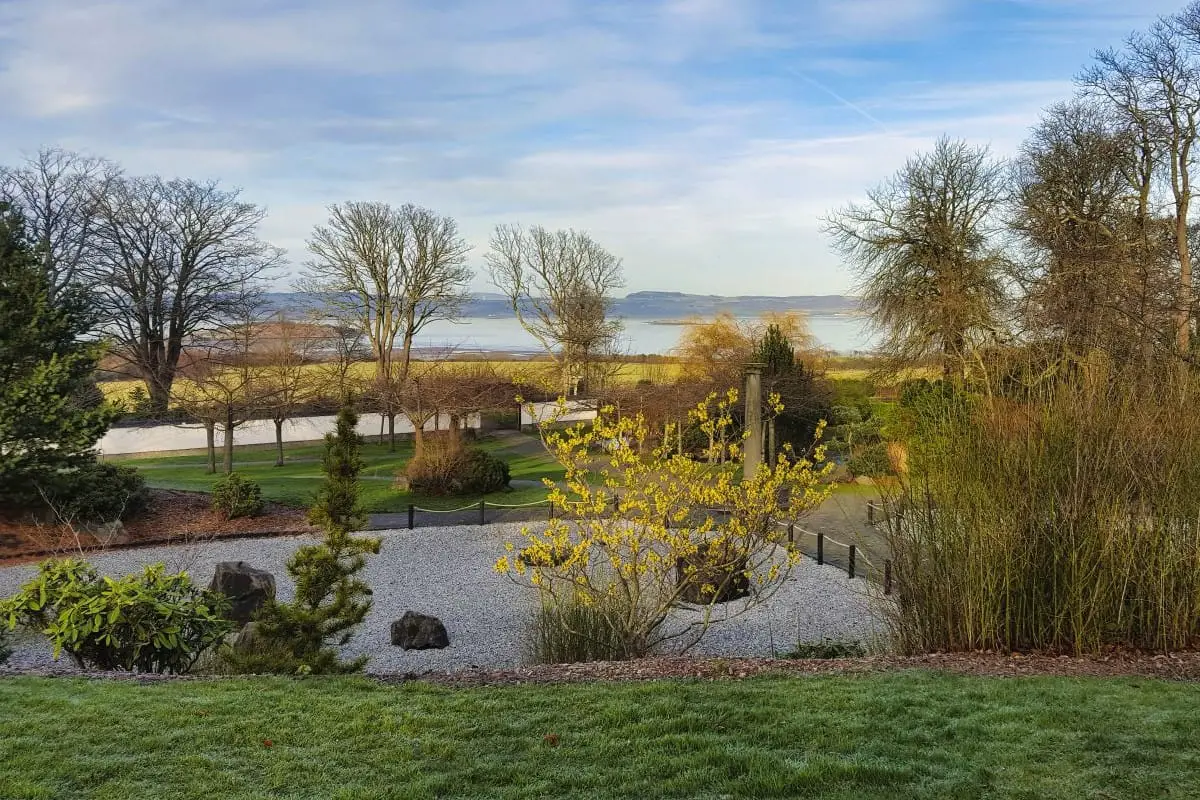
Things to Do
Guided Castle Tours: Discover the rich history of Lauriston Castle through a guided tour. Explore the lavish interiors, antique furniture, and beautiful tapestries. Tours run daily and must be pre-booked.
Japanese Garden: Visit the tranquil Kyoto Friendship Garden, inspired by traditional Japanese design. This attractive garden has been named one of the top three Japanese gardens in Britain. It features bamboo shelters, water basins, and a Shinto shrine, making it a perfect place to unwind and connect with nature.
Photography: For photography enthusiasts, Lauriston Castle offers stunning views of the Firth of Forth and the Fife coastline. The castle, the lush gardens, and the scenic surroundings guarantee you’ll capture some spectacular shots.
Educational Workshops: Participate in the various educational workshops that Lauriston Castle offers. They range from arts and crafts to history lectures and gardening workshops. It’s a great opportunity to learn something new in a historic setting.
Picnicking: Enjoy a leisurely picnic in the castle’s beautiful grounds. The lush lawns that overlook the sea provide a perfect backdrop for a family outing or a romantic date. Remember to clean up afterwards to maintain the beauty of the place.
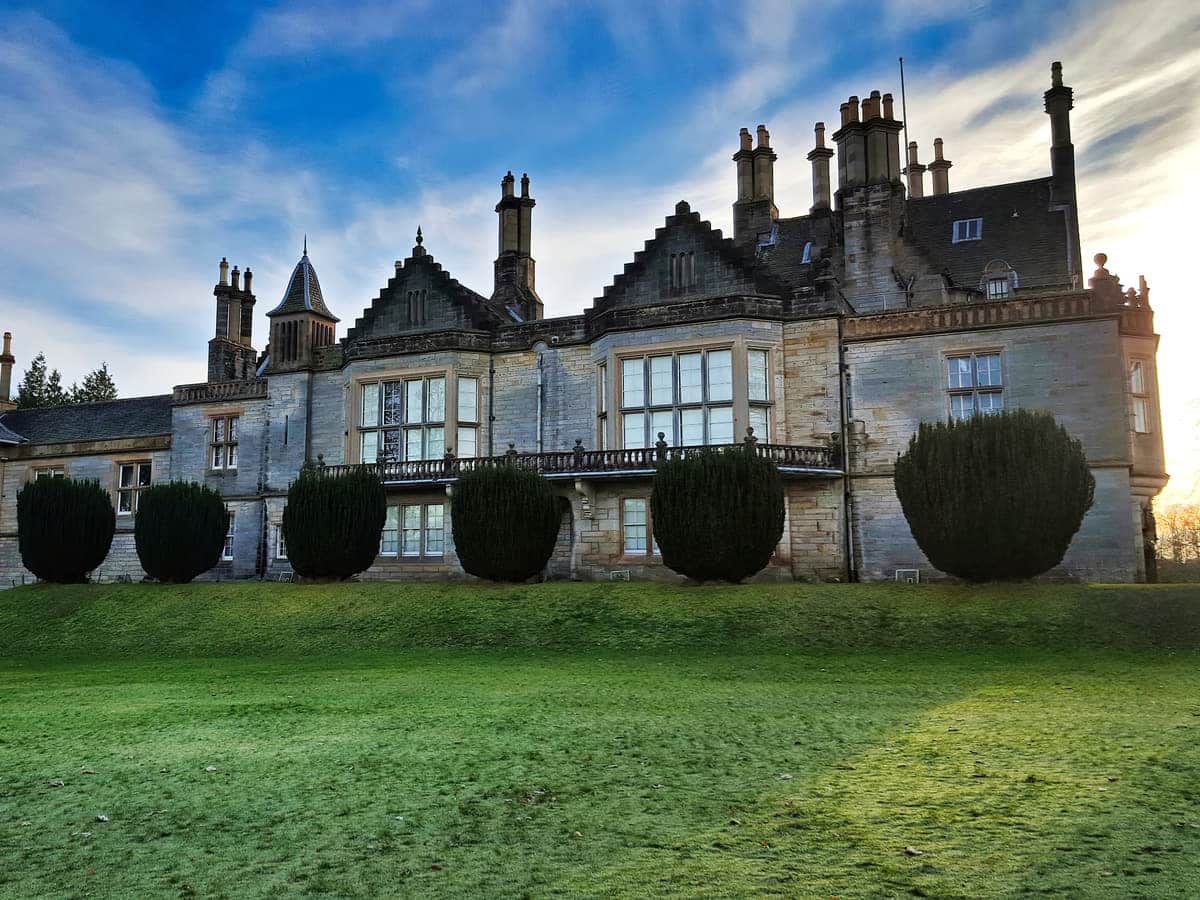
Things to Do Nearby
Blackness Castle. Linlithgow EH49 7NH. 25-minute drive.
A 15th-century fortress overlooking the Firth of Forth. Blackness Castle is known as the ‘ship that never sailed’ due to its unusual bow-shaped front. The castle features restored rooms, a Victorian pier and a military barracks with a shop and toilets. Nearby Blackness Bay has footpaths running along the shoreline.
Forth Bridges. 9XY, South Queensferry. 16-minute drive.
The Forth Rail Bridge is a UNESCO World Heritage Site that is best seen from this viewpoint at the Forth Bridge operations centre. From the car park, it’s possible to walk onto the footpath that runs along the Forth Road Bridge.
Dalmeny House. South Queensferry EH30 9TQ. 13-minute drive.
A Gothic country mansion built in 1817 that is home to the Earls of Rosebery. The house is open to the public for guided tours in the summer only.
Silverknowes Beach. Edinburgh EH4 5ER. 9-minute drive.
A large shingle and sand beach that is famed for its views across the Firth of Forth and Cramond Island. There is a large car park and a wide causeway next to the Gipsy Brae recreation ground.
River Almond Walkway. Caddell’s Row, Cramond, Edinburgh EH4 6HY. 6-minute drive.
This picturesque footpath follows the River Almond from Cramond to the outskirts of Edinburgh Airport. The walkway is suitable for cyclists and walkers.
Frequently Asked Questions
Is Lauriston Castle free?
The Museums and Galleries of Edinburgh are responsible for organizing guided tours of Lauriston Castle’s interior. Paid entry only. See their website for the latest tour prices.
There is no entry to the Lauriston Castle grounds. Gates are open between 8 am and 4 pm daily.
Who owned Lauriston Castle?
The last owners of Lauriston Castle were Mr. and Mrs. W. R. Reid and Mrs. Reid’s brother, Mr. William Barton. The Reids were wealthy middle-class business owners who built a large collection of antique furniture and ornaments, which they acquired during their worldwide travels.
The castle became a museum following the death of Mrs. Reid in 1926.
How old is Lauriston Castle?
Lauriston Castle is a 16th-century tower house on the outskirts of Edinburgh that has large 19th-century extensions.
There was a castle on the site in medieval times, but it was destroyed in 1544.
The tower house was rebuilt in 1590 and the extensions were added in 1827.
Can you take dogs to Lauriston Castle?
Dogs are not allowed inside Lauriston Castle. The extensive grounds are free to visit and dogs are allowed off-lead. Dog bins are provided.
How old is Lauriston Castle?
Lauriston Castle is a 16th-century castle located in the suburbs of Edinburgh, Scotland. It was built in the late 16th century, making it more than 400 years old.






